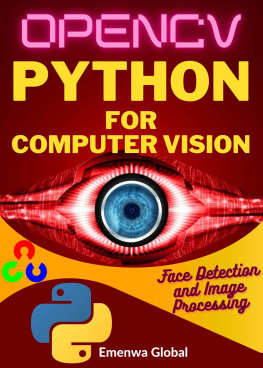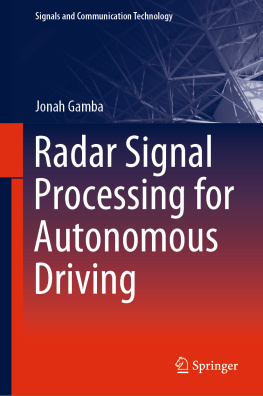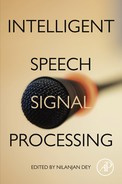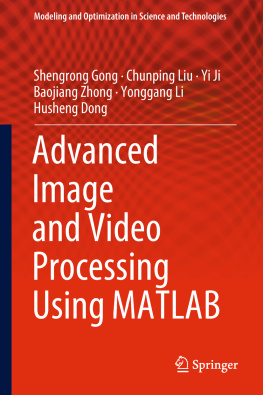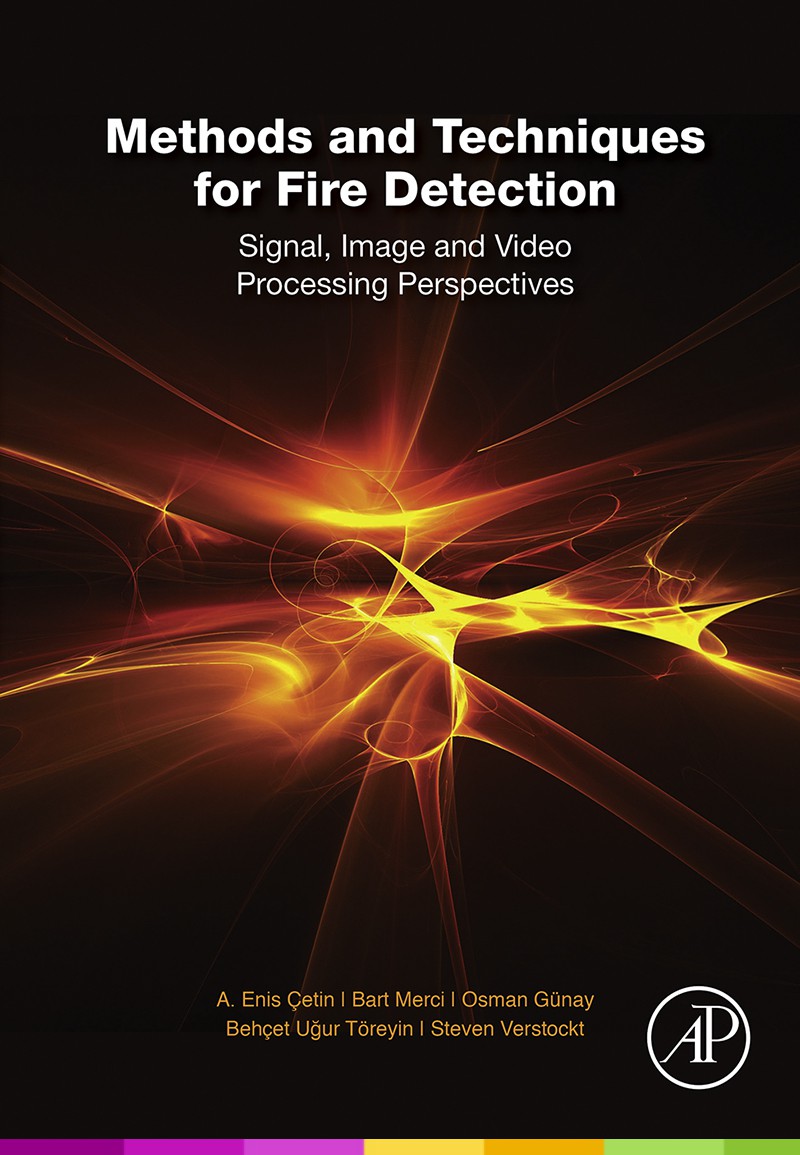Methods and Techniques For Fire Detection
Signal, Image and Video Processing Perspectives
First Edition
A. Enis etin
Bart Merci
Osman Gnay
Behet Uur Treyin
Steven Verstockt

Copyright
Academic Press is an imprint of Elsevier
125 London Wall, London, EC2Y 5AS, UK
525 B Street, Suite 1800, San Diego, CA 92101-4495, USA
50 Hampshire Street, 5th Floor, Cambridge, MA 02139, USA
The Boulevard, Langford Lane, Kidlington, Oxford OX5 1GB, UK
Copyright 2016 Elsevier Ltd. All rights reserved.
No part of this publication may be reproduced or transmitted in any form or by any means, electronic or mechanical, including photocopying, recording, or any information storage and retrieval system, without permission in writing from the publisher. Details on how to seek permission, further information about the Publishers permissions policies and our arrangements with organizations such as the Copyright Clearance Center and the Copyright Licensing Agency, can be found at our website: www.elsevier.com/permissions.
This book and the individual contributions contained in it are protected under copyright by the Publisher (other than as may be noted herein).
Notices
Knowledge and best practice in this field are constantly changing. As new research and experience broaden our understanding, changes in research methods, professional practices, or medical treatment may become necessary.
Practitioners and researchers must always rely on their own experience and knowledge in evaluating and using any information, methods, compounds, or experiments described herein. In using such information or methods they should be mindful of their own safety and the safety of others, including parties for whom they have a professional responsibility.
To the fullest extent of the law, neither the Publisher nor the authors, contributors, or editors, assume any liability for any injury and/or damage to persons or property as a matter of products liability, negligence or otherwise, or from any use or operation of any methods, products, instructions, or ideas contained in the material herein.
Library of Congress Cataloging-in-Publication Data
A catalog record for this book is available from the Library of Congress
British Library Cataloguing-in-Publication Data
A catalogue record for this book is available from the British Library
ISBN: 978-0-12-802399-0
For information on all Academic Press publications visit our website at http://store.elsevier.com/

Publisher: Joe Hayton
Acquisition Editor: Tim Pitts
Editorial Project Manager: Charlotte Kent
Production Project Manager: Jason Mitchell
Designer: Maria Ins Cruz
Biography
A. Enis etin got his PhD degree from the University of Pennsylvania in 1987. Between 1987 and 1989, he was an assistant professor of electrical engineering at the University of Toronto. He has been with Bilkent University, Ankara, Turkey, since 1989. etin was an associate editor of IEEE Transactions on Image Processing between 1999 and 2003. Currently, he is on the editorial boards of IEEE Signal Processing Magazine, IEEE Transactions on Circuits and Systems for Video Technology, and Machine Vision and Applications (IAPR), Springer. He is the editor-in-chief of Signal, Image, and Video Processing, Springer. He is a fellow of IEEE. His research interests include signal and image processing, humancomputer interaction using vision and speech, and audiovisual multimedia databases.
Bart Merci is full professor at Ghent University (Belgium). He is head of the research unit Combustion, Fire and Fire Safety. Having completed a PhD (Ghent University, 2000) on turbulence modeling in CFD simulations of non-premixed combustion, he is an expert in fluid mechanics aspects in reacting flows, more particularly related to fire and smoke dynamics. He has already coauthored over 100 peer review publications and over 200 conference publications and is an editorial board member of multiple leading journals in the field. He initiated and coordinates the International Master of Science in Fire Safety Engineering, a collaboration of Ghent University, Lund University, and the University of Edinburgh, with the University of Queensland, ETH Zrich and University of Maryland as Associated Partners.
Osman Gnay received his BSc and MS degrees in Electrical and Electronics Engineering from Bilkent University, Ankara, Turkey. In 2015, he received his PhD degree from the same department. Since 2011, he has been working in the defense industry as a system engineer. His research interests include computer vision, video segmentation, and dynamic texture recognition.
Behet Uur Treyin received his BS degree from the Middle East Technical University, Ankara, Turkey, in 2001 and MS and PhD degrees from Bilkent University, Ankara, in 2003 and 2009, respectively, all in electrical and electronics engineering. He is now an Assistant Professor with the Informatics Institute at Istanbul Technical University. His research interests lie broadly in signal processing and pattern recognition with applications to image/video analysis, and communication systems. His research is focused on developing novel algorithms to analyze and compress signals from a multitude of sensors such as visible/infra-red/hyperspectral cameras, microphones, passive infra-red sensors, vibration sensors, and spectrum sensors for wireless communications.
Steven Verstockt received his masters degree in informatics from Ghent University in 2003. Following his studies in applied informatics, he began teaching Multimedia courses at Hogeschool Gent and at the end of 2007, he joined the ELIT Lab of the University College West-Flanders as a researcher. In 2008, he started a PhD on video fire analysis at the Multimedia Lab of the Department of Electronics and Information Systems of Ghent UniversityiMinds (Belgium). Since 2012, he has worked as a postdoctoral researcher in this lab focusing on multi-sensor fire analysis. In October 2015, he was appointed a tenure track position as assistant professor in Multimedia at the same lab.
Acknowledgments
Research activities in this book were funded by the Turkish Scientific and Technical Research Council (TBTAK), the European Commission 7th Framework Program under Grant FP7-ENV-2009-1244088 FIRESENSE (Fire Detection and Management through a Multi-Sensor Network for the Protection of Cultural Heritage Areas from the Risk of Fire and Extreme Weather Conditions), Ghent University, iMinds, the Institute for the Promotion of Innovation by Science and Technology in Flanders (IWT), the Fund for Scientific Research-Flanders, and the Belgian Federal Science Policy Office. A. Enis etin, Behet Uur Treyin and Osman Gnay would like to express their gratitude to Mr. Nurettin Doan and Mr. lhami Aydin of the Turkish General Directorate of Forestry (Orman Genel MdrlOGM), and to Dr. M. Bilgay Akhan suggesting them to study computer vision based fire detection.
Chapter 1
Introduction
Signal, image, and video processing are widely used in many security applications. It is possible to use visible-range and special purpose infrared surveillance cameras as well as pyro-infrared detectors for fire detection. This requires intelligent signal processing techniques for detection and analysis of uncontrolled fire behavior. As the number of recently proposed signal, image, and video processing-based fire detection methods increased over the last 10 years, a need for a book presenting basic principles of these methods emerged.


